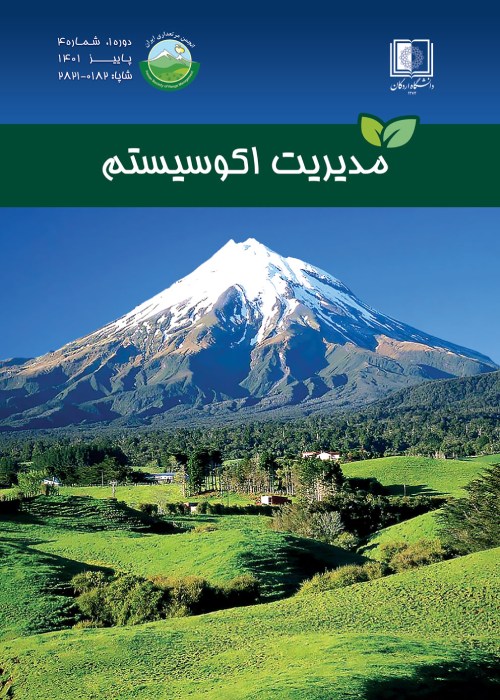Surface quantitative zoning using a circular fundamental form for optimal site selection of the floodwater spreading (Case study: Garbayegan basin, Fasa)
In the management of desert areas, studies related to water, soil and vegetation are carried out at the watershed or regional scale. Geomorphological zoning is one of the basic studies.. Considering the increase in population and decrease in rainfall, it seems necessary to use surface waters. Therefore, identification of geomorphological Features of the earth's surface is important for the construction of water structures and their site selection Identifying geomorphological types and land units of Earth's surface is necessary for Landuse planning and land use for different uses. So far, Identification of geomorphological features has been done qualitatively and based on expert opinion In this study, the quantitative zoning is used to identify suitable areas for artificial recharge in the mountainous area of Gohar and Garbayegan plain, in Fars province fitting a circular fundamental form to the surface. In this research, with digital elevation model and ArcGIS 9.3, Matlab 7.1 and ENVI 4.8 softwares, and using quantitative relationships for the Kuhghar area in the Garbaigan plain of Fasa, site selection of the floodwater spreading was investigated. The structures with grade two for triplex windows and the data from the digital elevation model with a resolution of 10m was used to determine the best fitable fundamental structure. The sum of square differences of the surface differences is used as an indicator to determine the degree of fitting the fundamental structures. Using the degree of fitting, the degree of suitability of the surface for artificial recharge has been determined only by surface morphology view. By fitting the interpretable patterns to the Earth's surface it can be determined that the earth was similar to what pattern and formation mechanism. The results show that the surfaces located downstream of the alluvial cones and the plains are most suitable areas for floodwater spreading in the Garbayegan watershed. One of the uses of quantitative zoning in the field of erosion and sedimentation is that by accurately fitting the areas exposed to erosion, it is possible to accurately calculate the ratio of height changes in the margins of basins and erosion areas, as well as the height increase in low-lying areas as a result of sedimentation.
- حق عضویت دریافتی صرف حمایت از نشریات عضو و نگهداری، تکمیل و توسعه مگیران میشود.
- پرداخت حق اشتراک و دانلود مقالات اجازه بازنشر آن در سایر رسانههای چاپی و دیجیتال را به کاربر نمیدهد.



